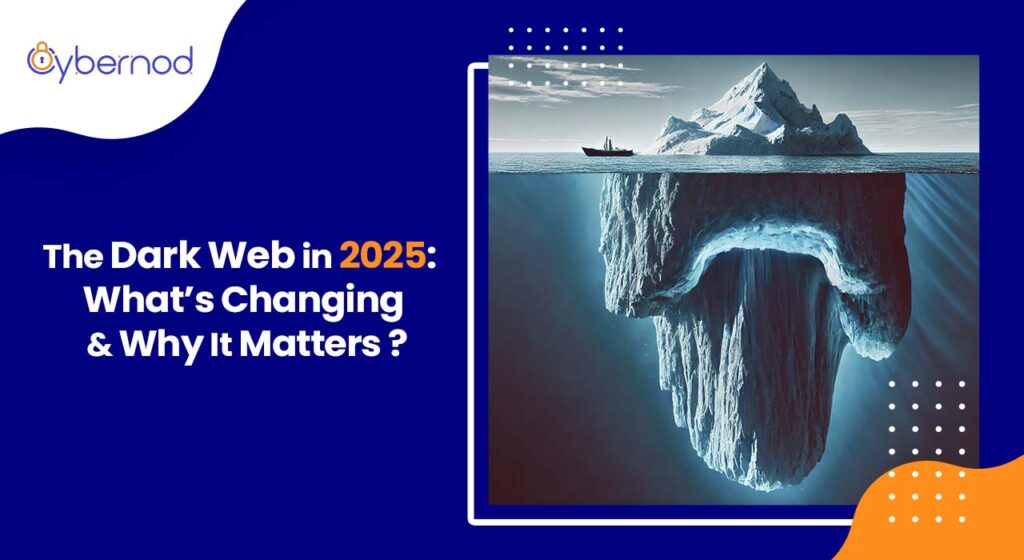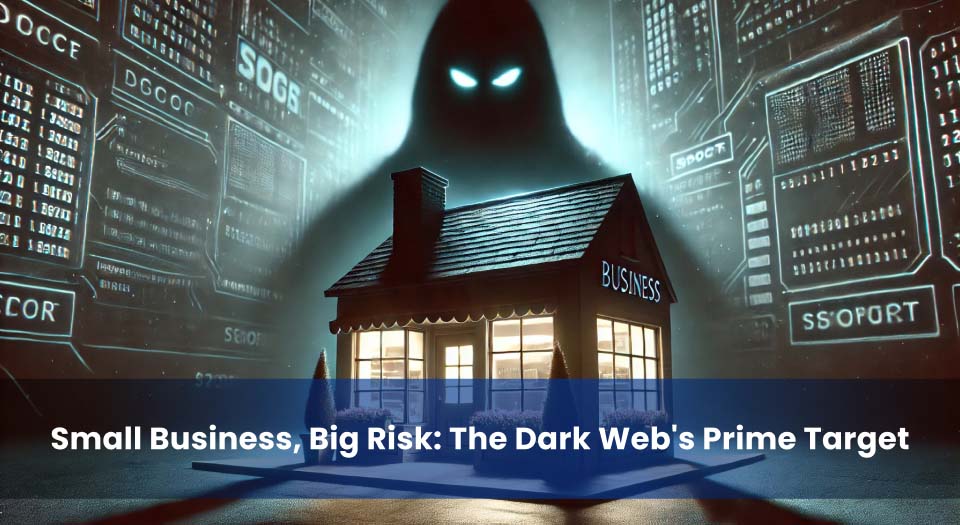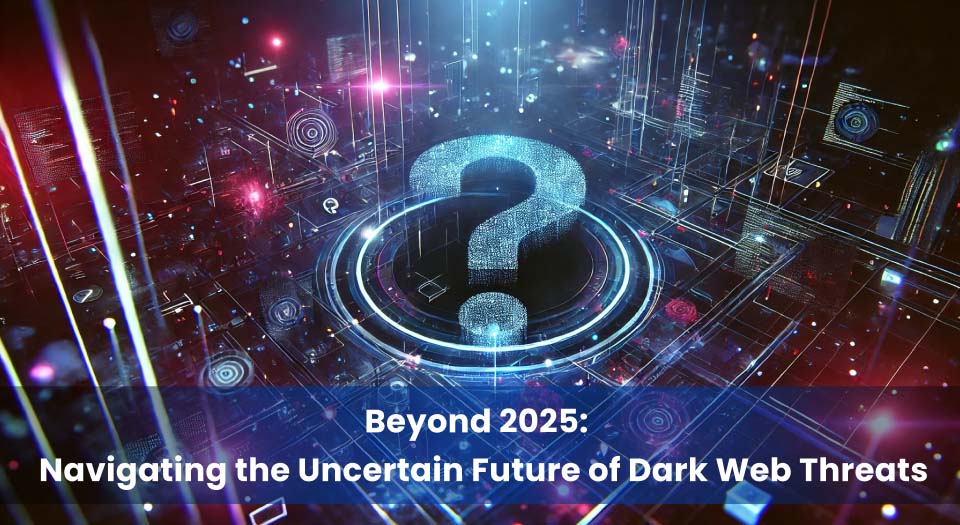
The dark web remains a concealed segment of the internet, accessible only through specialized tools like Tor, where illicit activities, data breaches, and cybercriminal marketplaces thrive. While law enforcement agencies and cybersecurity firms continuously attempt to mitigate its risks, the dark web evolves, adopting sophisticated encryption methods and decentralized technologies that make tracking and enforcement increasingly difficult.
By 2025, cybersecurity threats originating from the dark web are projected to rise sharply, with small and medium-sized businesses (SMBs) among the most vulnerable. Reports indicate that more than 60% of SMBs targeted by cyberattacks shut down within six months, often due to exposed credentials or financial fraud linked to dark web activity. Cybercriminals are leveraging artificial intelligence to automate attacks, refine phishing strategies, and exploit security vulnerabilities faster than businesses can respond. A robust cybersecurity risk assessment is no longer optional—it is a critical necessity for businesses to safeguard sensitive data and financial assets.
The Evolution of the Dark Web: A Snapshot of 2025
Over the past five years, the dark web has undergone significant transformations, adapting to technological advancements and shifting cybercriminal strategies. Between 2020 and 2025, there has been a notable decline in the mention of certain Software-as-a-Service (SaaS) platforms on dark web marketplaces, with WordPress-Admin references decreasing by nearly 98%, and Microsoft Active Directory by 44%.
Concurrently, cybercriminals have increasingly exploited valid credentials to infiltrate networks. In 2023, attacks utilizing compromised accounts surged by 71% year-over-year, with 30% of incidents involving the use of legitimate login details.
Emerging technologies have played a pivotal role in the dark web’s evolution. The integration of artificial intelligence (AI) has led to the development of AI-driven malware and deepfake scams, with deepfake fraud incidents increasing tenfold in 2023 compared to the previous year.
Additionally, the advent of quantum computing poses potential threats to current encryption standards, necessitating a reevaluation of security protocols.
The table below illustrates the shift in dark web activities between 2020 and 2025:
| Activity | 2020 | 2025 |
|---|---|---|
| SaaS Platform Mentions | High | Low |
| Use of Compromised Credentials | Moderate | High |
| AI-Driven Malware Incidents | Low | High |
| Quantum Computing Threats | Emerging | Significant |
This evolution highlights the dynamic nature of cyber threats and the imperative for businesses to proactively adapt their cybersecurity measures.
Key Threats Emerging from the Dark Web in 2025
In 2025, the dark web presents an evolving array of threats, significantly impacting businesses and individuals alike.
Rise of AI-Powered Attacks
Cybercriminals are increasingly leveraging artificial intelligence to enhance the sophistication of their attacks. AI enables the automation of phishing schemes, the creation of advanced malware, and the evasion of traditional security measures. For instance, AI-generated deepfake technology has been employed to craft highly convincing fraudulent communications, leading to substantial financial and data losses. In 2024, AI-driven scams resulted in over $1 billion in damages globally.
Decentralized Marketplaces
The adoption of blockchain technology has facilitated the emergence of decentralized marketplaces on the dark web. These platforms utilize cryptocurrencies to conduct anonymous transactions, complicating efforts by law enforcement to trace illicit activities. The proliferation of such marketplaces has led to a 60% increase in untraceable illegal transactions since 2023.
Dark Web Services Targeting Small Businesses
Small businesses have become prime targets for dark web services offering leaked credentials, insider threats, and ransomware-as-a-service (RaaS). The accessibility of RaaS has lowered the barrier for cybercriminals, resulting in a 45% surge in ransomware attacks on small enterprises in 2024. These attacks often lead to significant operational disruptions and financial losses.
New Regulations and Their Effect
In response to escalating cyber threats, governments worldwide are enacting stringent regulations aimed at curbing dark web activities. Initiatives include enhanced monitoring of cryptocurrency transactions and international collaborations to dismantle illicit online marketplaces. While these measures have led to the shutdown of several high-profile platforms, the decentralized nature of the dark web poses ongoing challenges to regulatory enforcement.
Understanding these emerging threats is crucial for businesses to conduct comprehensive cybersecurity risk assessments and implement robust protective measures.
How Small Businesses Are Affected

Small businesses have increasingly become prime targets for cybercriminals operating on the dark web. Their limited cybersecurity resources and valuable data assets make them susceptible to various cyber threats. A 2023 report by cybersecurity firm Kaspersky revealed that over 43% of cyberattacks were directed at small businesses, underscoring their vulnerability.
The exposure of customer data on the dark web can have devastating consequences for small enterprises. Stolen information, such as credit card details and personal identifiers, is frequently traded on dark web marketplaces, leading to financial fraud and identity theft. The financial repercussions are significant; in 2023, small businesses faced an average loss of nearly $50,000 per cyber incident.
A notable case involves KNP, a logistics company with a 150-year history, which suffered a ransomware attack by the Akira group in 2023. Despite having cybersecurity insurance and international data security accreditation, the attack crippled their systems, leading to the company’s closure within three months and resulting in 730 job losses.
The table below outlines common dark web threats and their impacts on small businesses:
| Threat | Description | Impact on Small Businesses |
|---|---|---|
| Stolen Credentials | Employee or customer login information sold on dark web forums. | Unauthorized access to sensitive systems and data breaches. |
| Ransomware-as-a-Service (RaaS) | Malicious software designed to block access to a system until a ransom is paid, available for purchase on the dark web. | Operational disruptions and significant financial losses. |
| Phishing Kits | Pre-packaged tools to create fraudulent emails and websites, facilitating credential theft. | Compromised employee accounts and potential data breaches. |
| Insider Threats | Employees recruited via the dark web to leak confidential information. | Loss of intellectual property and competitive advantage. |
Given these threats, it is imperative for small businesses to conduct regular cybersecurity assessments and implement robust security measures to protect their assets and maintain customer trust.
Small businesses are clearly at significant risk from dark web activity. Understanding these threats is the first step, but implementing effective protective measures is crucial. For a comprehensive guide on building a robust cybersecurity strategy tailored for small businesses, see our article: “Protecting Small Businesses: Key Cybersecurity Strategies.“
Defensive Strategies: How Businesses Can Protect Themselves

In the face of escalating cyber threats emanating from the dark web, businesses must adopt comprehensive defensive strategies to safeguard their assets and maintain operational integrity.
Implementing Dark Web Monitoring
Proactive surveillance of dark web activities is essential for early detection of compromised data. Services such as those offered by CrowdStrike provide continuous monitoring, enabling businesses to identify and respond to potential breaches before they escalate. By receiving timely alerts, organizations can mitigate risks associated with data exposure and unauthorized access.
Security Gap Analysis
Conducting a thorough security gap analysis allows businesses to pinpoint vulnerabilities within their cybersecurity framework. This process involves evaluating existing security measures against industry standards to identify deficiencies. Companies like eSecurity Solutions specialize in performing such analyses, offering detailed assessments that inform the development of robust security postures.
Proactive Cybersecurity Measures
Beyond monitoring and assessment, implementing proactive measures is crucial. Employee training programs enhance awareness of phishing schemes and social engineering attacks. The adoption of multi-factor authentication (MFA) adds an extra layer of security, reducing the likelihood of unauthorized access. Additionally, deploying endpoint protection solutions safeguards devices from malware and other malicious activities. Providers like Darktrace offer AI-driven security solutions that adapt to emerging threats, ensuring comprehensive protection across all endpoints.
Choosing the Right Cybersecurity Solution
Selecting an appropriate cybersecurity partner is vital, especially for small businesses with limited resources. Key considerations include the provider’s expertise in dark web monitoring, the ability to perform comprehensive security gap analyses, and a track record of helping clients comply with cybersecurity regulations. Engaging with reputable firms ensures access to tailored solutions that address specific organizational needs.
By integrating these defensive strategies, businesses can fortify their defenses against dark web-originated threats, ensuring resilience and compliance in an increasingly complex cybersecurity landscape.
The Future of the Dark Web and Cybersecurity in 2025 & Beyond

As we progress through 2025, cybercriminals are anticipated to refine their tactics, increasingly utilizing artificial intelligence to develop more sophisticated and scalable attacks. This evolution necessitates that businesses, particularly small enterprises, adopt AI-driven cybersecurity solutions to effectively counter these advanced threats. The integration of machine learning and behavioral analysis enables the detection of anomalies and the anticipation of potential vulnerabilities, thereby enhancing defensive capabilities. Continuous cybersecurity assessments are imperative for small businesses to identify and rectify security gaps, ensuring compliance with evolving regulations and the protection of sensitive data. Access to free cybersecurity resources can aid these businesses in fortifying their defenses without imposing significant financial burdens. Proactive engagement in regular security evaluations and the adoption of advanced protective measures are essential steps in mitigating the risks associated with the dynamic landscape of cyber threats.
Safeguard Your Business: Take Action Against Dark Web Threats
The dark web continues to pose a significant risk to businesses, facilitating cybercriminal activities that exploit sensitive data and security weaknesses. Without proactive defenses, companies face financial losses, reputational damage, and regulatory consequences. Conducting a cybersecurity assessment and implementing dark web monitoring are essential steps in mitigating these threats. Cybernod provides cutting-edge security solutions, helping businesses detect exposed credentials, security vulnerabilities, and cyber threats before they escalate. Protect your organization today—schedule a dark web risk assessment with Cybernod. Visit Cybernod to secure your business against evolving cyber threats.
Categorized in: